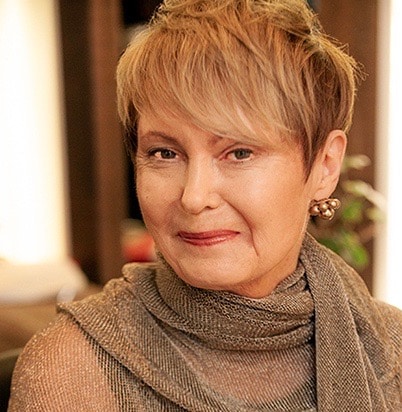Mary McBride is the chair of the Arts and Cultural Management and Design Management graduate programs at Pratt Institute School of Art in New York City. An executive coach, a frequent international speaker, and a visiting professor in Spain, Turkey, India and Russia, she is also Editor of Catalyst—an online publication focusing on leadership in the 21st century. With an artistic background herself, Mary is in a unique position to see the creative aspects of business design and entrepreneurial decision-making in fields ranging from arts and culture, to publishing, financial services, technology, retail store development, apparel and packaging, and product and strategy design.
Beyond the MBA
- “I got a call from Pratt Institute that said: ‘Do you think you can create an MBA for designers and artists and cultural people?’ And I said: ‘I don’t think they need an MBA, I think they need something that goes beyond the MBA—and almost, in a way, the antidote to the MBA.”
- “I wanted to make a bridge for myself between my creative side and my strategic side, and then I got an opportunity to build that bridge for lots of other people.”
- “What [these] program graduate students do is design experiences that will engage and enliven—and hopefully get people to be part of the culture and civilization and the conversation that we’re all trying to have.”
Designing Strategy
- “When design is not part of strategy formulation, and it’s just part of the execution of strategy, you lose 50-75% of the value of a design.”
- “Part of being a successful entrepreneur is figuring out a place to locate yourself where the conditions of the ecology are supportive of what you’re trying to do.”
- “Entrepreneurship isn’t one step. It’s really thinking ahead to where you would like to be.”
- “It really makes me crazy when design professors and professionals keep saying that ‘design solves problems.’ And it does, but it’s not all that design does. It actually turns a problem into a possible opportunity for a particular group of users.”
- “Art is a lot of different things—mostly it is about self-expression though—whereas design is more about: what can I bring into the world that can be used by other people?”
Sacrifice and Value
- “Words make a difference. So if I’m telling myself that [what I’m doing now] is a sacrifice, that’s very different than telling myself that this is a choice.”
- “When I hear people talking about how much they’re sacrificing for their art form or for their family or because they want to feed the pup, I say, well: isn’t that a choice that you’re making? If you’re a very deliberate and strategic choice-maker, shouldn’t that make you feel like a more powerful, able, person?”
- “I think people who know what their values are…know what their values are! So yes, they’re trading, yes they’re ‘sacrificing,’ but what they don’t trade off is what they value.”
Quantifying the Value of your Art
- “It’s asking for a miracle to expect that what you think has value is necessarily going to have value in exchange to [your market] if you haven’t even thought about them in your creative process.”
- “How you quantify anything is really a matter of meeting the market on its own terms and negotiating.”
- “When you bring [your art] to market you meet people who understand your passion and purpose, who can help you set a financial value to [your art].”
The Entrepreneurial Mind & Innovation
- “We get to know each other on a deeper level by creating narratives, exchanging them, seeing where it is we like to amend them… so I think it’s necessary for everyone to have that [in their] artist statement.”
- “I spent too long thinking about what that more traditional business approach looks like. It keeps shifting over time, and it depends on what culture, country, and part of the ecology that you’re working in.”
- “I actually think that most business, if it’s done well, is creative and has to be creative.”
- “I think most industry leaders need to first map their ecosystem of decision- making. Who are their partners, who are their allies, what are they exactly trying to do in that ecosystem? That’s just a bare beginning.”
The Triple Bottom Line
- “ ‘The Triple Bottom Line by Design’ means: design into your brand identity, brand narrative, brand story, and everything you do in your company…bake-in the idea that we’re in it to win it for ourselves, but that we also want to enable, engage and enliven our world.”
- “I think having a social mission is a baseline for any organization.”
- “The more robust your social mission I think the more your comparative value goes up for users who are interested in that.”






